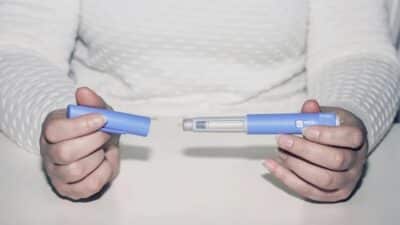The quest for enhancing human capabilities and addressing medical conditions has led to remarkable advancements throughout history. One such area of innovation is penile implants, which have undergone a fascinating journey of development and refinement. From ancient attempts to modern surgical techniques, the evolution of penile implants is a testament to human ingenuity and the relentless pursuit of medical progress.
Ancient Beginnings:
Early attempts by ancient Egyptians focused on aesthetic enhancements of the male genitalia, reflecting societal ideals of beauty and fertility. These endeavors were often intertwined with religious beliefs and rituals, with the phallus symbolizing fertility, regeneration, and divine power.
Artifacts and hieroglyphic inscriptions from ancient Egypt provide evidence of the cultural significance placed on male genitalia. Sculptures, paintings, and even written records depict phallic symbols and rituals aimed at invoking the powers of fertility and virility.
While the primary focus of ancient Egyptian attempts at penile enhancement was aesthetic, it laid the groundwork for future developments in the understanding and treatment of male sexual health. The ancient Egyptians’ fascination with the male anatomy reflects the timeless human desire for physical perfection and vitality.
Early Modern Innovations:
Fast forward to the Renaissance era, and we begin to see more structured attempts at addressing erectile dysfunction and other penile-related issues. Inventors and medical practitioners of the time developed crude mechanical devices aimed at restoring erectile function. These early prototypes laid the groundwork for future advancements in the field of penile implants.
The 20th Century Breakthroughs:
Penile implants underwent significant advancements in the 20th century, marking a transformative period in the treatment of erectile dysfunction. Two key breakthroughs defined this era:
1. Inflatable Penile Implants: In the 1930s, the first inflatable penile implant was introduced, marking a milestone in the field of urology. Although its effectiveness and safety were limited by the technology of the time, this early prototype laid the foundation for future innovations in penile implant technology.
2. Modern Penile Implants: The 1970s witnessed a revolutionary development with the introduction of the inflatable penile prosthesis by Dr. Brantley Scott and his colleagues. This modern penile implant offered a more reliable and sophisticated solution for erectile dysfunction. By using an inflatable mechanism activated by a pump, patients could achieve on-demand erections, enhancing both their physical and emotional well-being.
In addition to inflatable implants, the 20th century saw the development of alternative options for patients unable to use inflatable devices. Semi-rigid and malleable penile implants emerged as viable alternatives, composed of flexible rods inserted into the penis. While these implants offer a permanent but less flexible erection compared to inflatable devices, they provide valuable options for patients with specific needs or preferences.
Contemporary Advances:
In recent years, advancements in medical technology have propelled penile implant procedures to new heights, revolutionizing the treatment of erectile dysfunction and related conditions. These contemporary advances have led to:
- Enhanced Surgical Techniques: Surgeons now employ minimally invasive approaches for penile implant procedures, resulting in shorter recovery times and reduced post-operative discomfort. Advanced imaging technologies and surgical instruments allow for more precise placement of the implant, optimizing outcomes and patient satisfaction.
- Improved Patient Outcomes: The refinement of surgical techniques, coupled with advancements in implant design, has significantly improved patient outcomes. Studies have shown that modern penile implants yield higher satisfaction rates and greater functional outcomes, restoring not only erectile function but also confidence and quality of life.
- Advanced Materials: The materials used in penile implants have undergone significant advancements, leading to implants that are more durable, biocompatible, and resistant to wear and tear. Innovations in biomaterials science have paved the way for implants that closely mimic the natural feel and function of the penis, enhancing patient comfort and satisfaction.
- Customization and Personalization: Modern penile implants offer greater customization options, allowing surgeons to tailor the implant to each patient’s unique anatomy and needs. This personalized approach ensures optimal fit and function, maximizing the effectiveness of the implant and minimizing the risk of complications.
- Continued Research and Innovation: The field of penile implants continues to evolve rapidly, driven by ongoing research and innovation. Clinical trials are underway to explore new technologies and techniques for penile reconstruction and erectile restoration, promising even greater advancements in the future.
Overall, contemporary advances in penile implant technology have transformed the landscape of erectile dysfunction treatment, offering hope and restored quality of life to countless individuals worldwide.
The Future of Penile Implants:
“Emerging technologies such as tissue engineering and regenerative medicine may offer new solutions for restoring erectile function and addressing other penile-related issues.” – Source
As medical science continues to advance, the future of penile implants holds promise for further innovation and refinement. Ongoing research aims to improve the safety and effectiveness of existing penile implant devices, ensuring that patients receive the best possible care.
Looking ahead, the integration of cutting-edge technologies like nanotechnology and 3D printing may revolutionize the design and manufacturing of penile implants, leading to even more customized and functional solutions for patients. With continued investment in research and development, the future of penile implants appears bright, offering hope for enhanced outcomes and quality of life for individuals with erectile dysfunction and related conditions.
Conclusion:
The history of penile implants is a testament to human creativity, perseverance, and the relentless pursuit of medical progress. From ancient attempts at enhancement to modern surgical techniques, penile implants have come a long way in addressing erectile dysfunction and other penile-related conditions. As we look to the future, continued research and innovation promise even greater advancements in this field, offering hope to countless individuals seeking to regain their quality of life.





